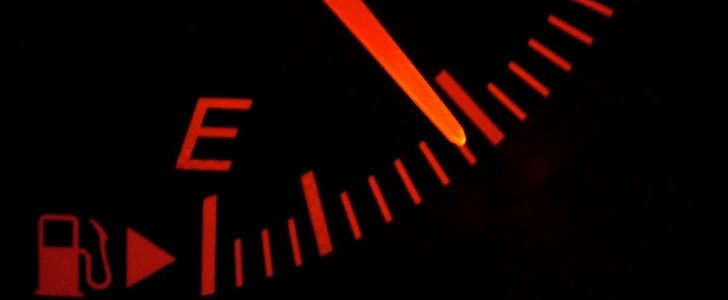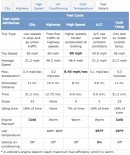Some say that government-assisted environmentalism in the United States was born on a Wednesday, on April 22, 1970. That's when an environmental teach-in called “Earth Day” was founded by a certain U.S. senator who had the somewhat unfortunate name of Gaylord Nelson.
Of course, only the modern idea of government-assisted environmentalism was born that day, since basic ecology, conservationism and marijuana-smoking greenies had been up and atom for a quite a number of years prior.
The first ever Earth Day spawned a rather abrupt government interest in this subject, which eventually culminated in the birth of the Environmental Protection Agency (EPA) by the end of 1970. Not exactly bad timing, since the agency was founded not even three years before the first major oil crisis almost incapacitated the automotive industry. Since then, some say that the EPA has been the main government weapon in the fight for a cleaner environment for Americans.
Monitoring vehicle emissions and fuel economy is one of the subjects for which the EPA is important for both carmakers that do business on U.S. shores and car buyers as well. Every passenger car sold in America must have a so-called Monroney sticker on the windshield, where a number of vehicle specifications are present. The EPA-enforced label must include the car's MSRP, engine and transmission specifications, standard and optional equipment, NHTSA crash test ratings (since 2007) and last, but certainly not least, city and highway fuel economy ratings, as determined by the Environmental Protection Agency.
In the midst of Dieselgate or during rises in oil prices, a lot of people have been probably wondering how does the government monitor new vehicle emissions and fuel economy through its EPA arm. The truth is that it does and it doesn't, since only about 10 to 15 percent of all cars are actually tested by the EPA, and they're all done at the National Vehicle and Fuel Emissions Laboratory (NVFEL), in Michigan.
What about the remaining 85-90 percent cars, you ask? Well, that's where it gets a bit weird, since the remaining cars are tested by the manufacturers themselves. All of them use the same testing procedures as the EPA, which is why everything is in theory correlated. Otherwise, large fines may incur, with the most recent shenanigans regarding this matter having happened at Hyundai and Kia.
How, where and by whom?
Even though they are standardized, the actual EPA fuel economy numbers still allow many discrepancies compared to real-world numbers, a fact which even the EPA admits. Without further ado, here is how the actual testing of cars takes place, either at the EPA's NVFEL facility or when done by the carmakers themselves.
The two words of the day are “controlled environment,” since testing the cars on outside tracks, even with professional drivers, would pose two major problems. The first one would be that those tests are hardly repeatable, especially since they can be influenced by the weather, altitude, and other variables. The second one is obviously money-related, since it would require the building of designated test tracks that can support city, highway and combined types of driving.
No, EPA's system of rating new car MPG figures involves a dyno that in theory simulates actual driving in various environments. The dynamometer's rollers are adjusted to account for different levels of wind resistance and each vehicle's weight.
After being put on the dyno, the car is run through a simulated driving routine that can account for either city or highway environments. Meanwhile, the specialist behind the wheel has to pay attention to a computerized display that gives detailed information about his driving statistics compared to the required routine, or “schedule.”
Although you'd think that at the end of the test it's the fuel remaining in the tank that gets measured to arrive at the proper MPG rating, you'd be wrong. In fact, a special hose connected to the tailpipe collects the exhaust gasses coming out during the testing procedure. At the end of the driving schedules, it's the carbon emitted during the tests that gets measured, which in turn can be used to calculate how much fuel has been burned. According to the EPA, this method is more accurate than using a standardized fuel gauge. Obviously, electric cars and fuel-cell vehicles are exempt from this type of testing, as they don't use carbon-based fuels to achieve motion.
In the City cycle, which has been left unaltered since its introduction over 40 years ago, the driving routine attempts to simulate busy city traffic, with lots of stop-and-go situations and either slow or fast acceleration. The total duration of the test is 1874 seconds, of which the cold start phase lasts 505 seconds, the transient phase 864 seconds and the hot start phase 505 seconds. The average speed is 21.2 mph, and the car has to cover a simulated distance of 11.04 miles.
The Highway Fuel Economy Test Driving Schedule is pretty self-explanatory, and it intends to simulate a more stable traffic flow and at higher speeds. The average speed is way higher, at 48.3 mph, but the car only “travels” for 10.26 miles during the 765 seconds of testing.
Introduced in 2008, the US06 or Supplemental Federal Test Procedure lasts only 596 seconds, during which the car travels for 8.01 miles at an average speed of 48.37 miles. In theory, it simulates short bursts of high speeds on the highway.
Another test introduced in 2008, the SC03 or Speed Correction Driving Schedule also lasts 596 seconds but is done at an average speed of 21.55 mph and for a distance of 3.58 miles. It tries to simulate air conditioning use in driving under hot conditions, with a 95 degree F sun load being also accounted.
The final 2008 test is simply called the EPA Federal Test Procedure, and it simulates the effects of cold-start driving in stop-and-go traffic or driving in colder outside temperatures. It has the same duration, distance and average speed as the City cycle, with the only difference being the surrounding temperature.
Vehicle fuel economy testing was among one of the major attributions that it received control over in the beginning, with the EPA essentially supervising every single car sold in the U.S. since then. That is all in theory, obviously. In reality, the approximately 8 billion dollar annual budget that the EPA has received in recent years is not even nearly enough to cover the costs for testing close to 18 million vehicles sold annually in the U.S. Especially considering that vehicle testing is only one small part of the many environmental jobs that the EPA is responsible for.
Instead of a conclusion, you should probably put less weight on the EPA-rated fuel economy figures of your car and digest the EPA's own explanation for the varying mileage you probably experience: MPG can be affected by variable like your driving behavior, altitude, the car's condition, variations in the fuel used and the engine break-in period. Last, but certainly not least, some carmakers offer a multitude of options for their cars. So if you buy the version with the optional larger wheels or fancier body kit don't expect to have the same fuel economy as a lesser version of the same model.
The two words of the day are “controlled environment,” since testing the cars on outside tracks, even with professional drivers, would pose two major problems. The first one would be that those tests are hardly repeatable, especially since they can be influenced by the weather, altitude, and other variables. The second one is obviously money-related, since it would require the building of designated test tracks that can support city, highway and combined types of driving.
No, EPA's system of rating new car MPG figures involves a dyno that in theory simulates actual driving in various environments. The dynamometer's rollers are adjusted to account for different levels of wind resistance and each vehicle's weight.
After being put on the dyno, the car is run through a simulated driving routine that can account for either city or highway environments. Meanwhile, the specialist behind the wheel has to pay attention to a computerized display that gives detailed information about his driving statistics compared to the required routine, or “schedule.”
Although you'd think that at the end of the test it's the fuel remaining in the tank that gets measured to arrive at the proper MPG rating, you'd be wrong. In fact, a special hose connected to the tailpipe collects the exhaust gasses coming out during the testing procedure. At the end of the driving schedules, it's the carbon emitted during the tests that gets measured, which in turn can be used to calculate how much fuel has been burned. According to the EPA, this method is more accurate than using a standardized fuel gauge. Obviously, electric cars and fuel-cell vehicles are exempt from this type of testing, as they don't use carbon-based fuels to achieve motion.
The five schedules of the apocalypse
The aforementioned “schedules” are sadly a bit too standardized for their own good, not to mention that one of them has been the same since the 1970s. There are five schedules in total, three of which having been introduced in 2008.In the City cycle, which has been left unaltered since its introduction over 40 years ago, the driving routine attempts to simulate busy city traffic, with lots of stop-and-go situations and either slow or fast acceleration. The total duration of the test is 1874 seconds, of which the cold start phase lasts 505 seconds, the transient phase 864 seconds and the hot start phase 505 seconds. The average speed is 21.2 mph, and the car has to cover a simulated distance of 11.04 miles.
The Highway Fuel Economy Test Driving Schedule is pretty self-explanatory, and it intends to simulate a more stable traffic flow and at higher speeds. The average speed is way higher, at 48.3 mph, but the car only “travels” for 10.26 miles during the 765 seconds of testing.
Introduced in 2008, the US06 or Supplemental Federal Test Procedure lasts only 596 seconds, during which the car travels for 8.01 miles at an average speed of 48.37 miles. In theory, it simulates short bursts of high speeds on the highway.
Another test introduced in 2008, the SC03 or Speed Correction Driving Schedule also lasts 596 seconds but is done at an average speed of 21.55 mph and for a distance of 3.58 miles. It tries to simulate air conditioning use in driving under hot conditions, with a 95 degree F sun load being also accounted.
The final 2008 test is simply called the EPA Federal Test Procedure, and it simulates the effects of cold-start driving in stop-and-go traffic or driving in colder outside temperatures. It has the same duration, distance and average speed as the City cycle, with the only difference being the surrounding temperature.
Vehicle fuel economy testing was among one of the major attributions that it received control over in the beginning, with the EPA essentially supervising every single car sold in the U.S. since then. That is all in theory, obviously. In reality, the approximately 8 billion dollar annual budget that the EPA has received in recent years is not even nearly enough to cover the costs for testing close to 18 million vehicles sold annually in the U.S. Especially considering that vehicle testing is only one small part of the many environmental jobs that the EPA is responsible for.
Instead of a conclusion, you should probably put less weight on the EPA-rated fuel economy figures of your car and digest the EPA's own explanation for the varying mileage you probably experience: MPG can be affected by variable like your driving behavior, altitude, the car's condition, variations in the fuel used and the engine break-in period. Last, but certainly not least, some carmakers offer a multitude of options for their cars. So if you buy the version with the optional larger wheels or fancier body kit don't expect to have the same fuel economy as a lesser version of the same model.




